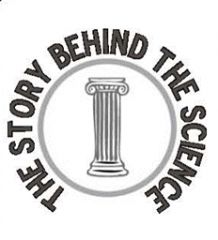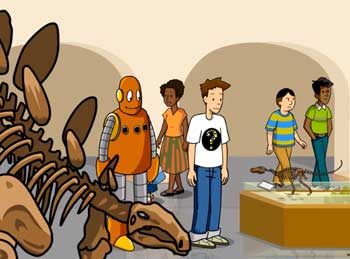Search by:
To search for teaching materials that address particular concepts in our conceptual framework, visit the teaching guide for your grade level:
K-2, 3-5 , 6-8, 9-12, or College
Found 10 resources:
Benjamin Franklin: STEM Activity Toolkit
Grade Level(s):
- 3-5
- 6-8
- 9-12
Source:
- PBS and WETA
Resource type:
- classroom activity
Discipline:
- Earth science
- Physical Sciences
Time: 1-6 hours
Overview
Ken Burns’s four-hour documentary, Benjamin Franklin, explores the revolutionary life of one of the 18th century’s most consequential figures. This STEM Activity Toolkit frames the context of the film series, and provides guidance for viewers to engage in discussions and activities around science, technology, engineering, and math.
Comparing rocks
Grade Level(s):
- K-2
Source:
- Janulaw, Sharon
Resource type:
- classroom activity
Discipline:
- Earth science
Time: 30 minutes
Overview
Learners will observe and sort samples of rocks and minerals to compare and contrast their physical properties. They will record their observations in Science Notebooks.
Exploring how liquids behave
Grade Level(s):
- K-2
Source:
- Janulaw, Sharon
Resource type:
- lab activity
Discipline:
- Physical Sciences
Time: 30 minutes
Overview
Learners observe how liquids behave and record their observations. Then they combine two of the liquids and observe and record how the liquids behave.
Exploring liquids
Grade Level(s):
- K-2
Source:
- Janulaw, Sharon
Resource type:
- classroom activity
Discipline:
- Physical Sciences
Time: 30 minutes
Overview
Learners will use their senses to investigate and observe three liquids. They will see, hear, touch, smell and taste to collect data and to ask and answer questions.
Introducing the Understanding Science Flowchart to middle school students
Grade Level(s):
- 6-8
Source:
- UC Museum of Paleontology
Resource type:
- classroom activity
Discipline:
- Earth science
Time: 1-2 class periods
Overview
Students read a story about Walter Alvarez and then plot his scientific journey on the Understanding Science Flowchart. Students find that science is seldom a linear story.
Mystery boxes for grades 3-5
Grade Level(s):
- 3-5
Source:
- Janulaw, Sharon
Resource type:
- classroom activity
Time: One class period
Overview
Working in groups, students pose explanations (hypotheses) for what they are observing and are asked to test their hypotheses. These procedures have been modified from Mystery Boxes: Uncertainty and Collaboration by Jean Beard.
Weathering and erosion
Grade Level(s):
- 3-5
- 6-8
Source:
- Whitfield, Lisé
Resource type:
- lab activity
Discipline:
- Earth science
Time: 4-6 Class periods
Overview
Students will conduct a series of experiments to explore the processes and effects of weathering and erosion.
Watching animals move
Grade Level(s):
- K-2
Source:
- Janulaw, Sharon
Resource type:
- classroom activity
Discipline:
- Earth science
Time: 30 minutes
Overview
Learners will identify the way animals move and the body parts used to move by observing animals, their body parts and their movements.
The story behind the science
Grade Level(s):
- 9-12
- College
Source:
- Iowa State University
Resource type:
- article
Time: Variable
Overview
Thirty stories spanning five disciplines help students explore key science concepts through the eyes of the scientists who were involved, while emphasizing the nature and process of science.
Scientific Process: The mysteries of life with Tim and Moby
Grade Level(s):
- 6-8
- 9-12
Source:
- BrainPOP
Resource type:
- Science Story
- video
Discipline:
- Earth science
- Life Science
Time: 10 minutes
Overview
How does science work? This animated video introduces key ideas using the story of the how science uncovered the link between the dinosaur extinction and a massive asteroid impact. (Note that this video inaccurately characterizes the difference between hypotheses and theories. See Understanding Science 101 for a correction.)




